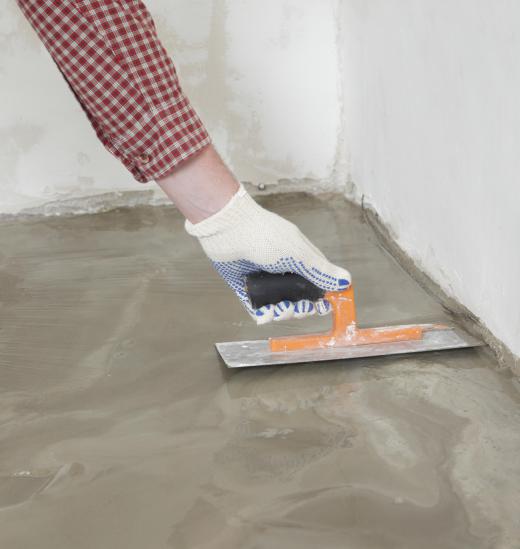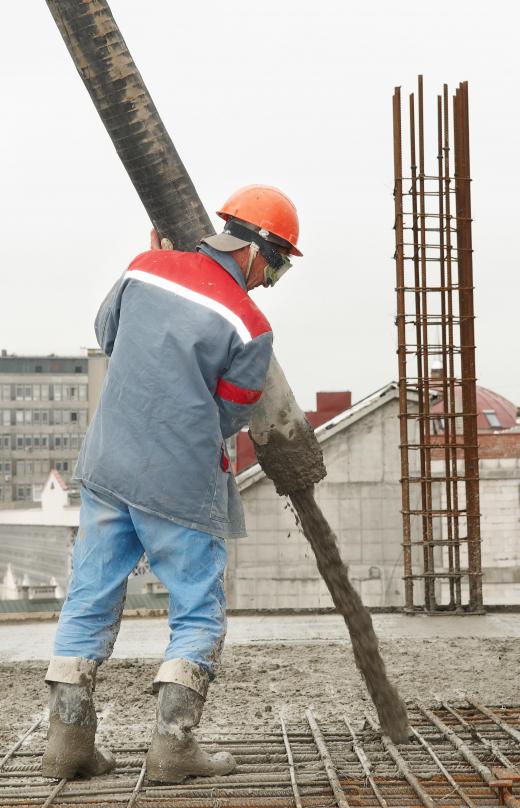A water reducer is a chemical compound added to concrete before or after it is mixed in order to produce concrete using less water while maintaining the material's workability, meaning it will not harden or set too quickly or too slowly. Depending on what type of water reducer is used, it can help decrease the amount of water needed to make concrete by 5-40%. Some advantages of using water reducers are increased strength of the hardened concrete, a less porous concrete that is also less water permeable, and often also a better finish. A water reducer can be described as a chemical retardant, because it slows down the chemical reaction that causes the concrete to harden. Commonly used water reducers include lignosulfonates, a byproduct of pulp-making, synthetic sulfonates, melamine, and polycarboxylates.
Concrete is a construction material made from the basic ingredients cement, aggregate material consisting of various kinds of sand and gravel, and water. Concrete also often contains various admixtures, such as water reducers, which are ingredients added to affect the properties of the concrete, for example its water content, setting time, and color. It is estimated that 70-90% of all concrete mixes used today contain a water reducer. A water reducer is also sometimes called a plasticizer, because it affects the plasticity of the concrete mixture, making it more workable with less added water.

A water reducer used as an admixture in concrete functions as a surface active agent, making it more difficult for the cement particles in the concrete mix to stick together. Water reducers are usually divided into three groups. Low-range or normal water reducers can reduce the amount of water needed for a certain concrete mix by 5%. Mid-range water reducers can decrease the amount of water used by 15%, and can also help keep the setting time for the concrete more stable, giving more control over how quickly or slowly the concrete dries. A high-range water reducer, also called a superplasticizer, can make it possible to use 40% less water, while still allowing for a workable mix of concrete.

What type of water reducer is added to the concrete depends on what the concrete will be used for. For example, different properties are needed when pouring tall columns of concrete than when making a concrete floor. Other factors such as the temperature the concrete is being made in and what finish is required can also affect the selection of water reducers.
